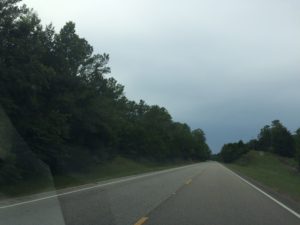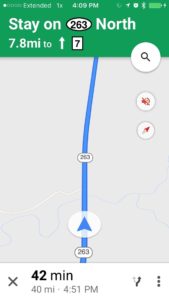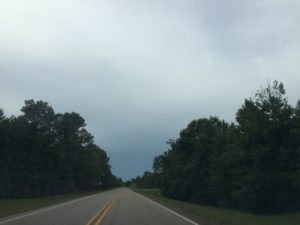Sweet Home Alabama
“The more you try to look sexy, the lamer it is, so you just have to commit to the comedy.”
-Channing Tatum
Welcome to Selma, Alabama.
Welcome to “Bloody Sunday”.
Welcome to History.
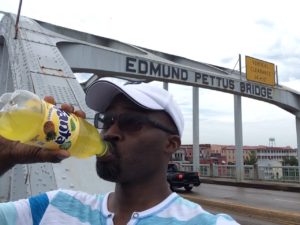
It felt like I drove through Alabama for days upon days upon days. After Florida, I was determined to head to Selma and walk over the Edward Pettus Bridge where “Bloody Sunday” occurred. And that’s what I did. It was beautiful. And eerie.
During January and February, 1965, Martin Luther King and SCLC led a series of demonstrations to the Dallas County Courthouse. On February 17, protester Jimmy Lee Jackson was fatally shot by an Alabama state trooper. In response, a protest march from Selma to Montgomery was scheduled for March 7.
Six hundred marchers assembled in Selma on Sunday, March 7, and, led by John Lewis and other SNCC and SCLC activists, crossed the Edmund Pettus Bridge over the Alabama River en route to Montgomery. Just short of the bridge, they found their way blocked by Alabama State troopers and local police who ordered them to turn around. When the protesters refused, the officers shot tear gas and waded into the crowd, beating the nonviolent protesters with billy clubs and ultimately hospitalizing over fifty people. “Bloody Sunday” was televised around the world.
Martin Luther King called for civil rights supporters to come to Selma for a second march. When members of Congress pressured him to restrain the march until a court could rule on whether the protesters deserved federal protection, King found himself torn between their requests for patience and demands of the movement activists pouring into Selma.
King, still conflicted, led the second protest on March 9 but turned it around at the same bridge. King’s actions exacerbated the tension between SCLC and the more militant SNCC, who were pushing for more radical tactics that would move from nonviolent protest to win reforms to active opposition to racist institutions. On March 21, the final successful march began with federal protection, and on August 6, 1965, the federal Voting Rights Act was passed, completing the process that King had hoped for.
Yet Bloody Sunday was about more than winning a federal act; it highlighted the political pressures King was negotiating at the time, between movement radicalism and federal calls for restraint, as well as the tensions between SCLC and SNCC.
(Reference: http://www.blackpast.org/aah/bloody-sunday-selma-alabama-march-7-1965)
Those Alabama back woods are some of the most beautiful and creepy you will ever witness. You can drive for hours in the midst of trees, lakes, forests and more trees. I thought Arkansas so far had the most trees but Alabama wins by a long shot.
My imagination loves to travel and I couldn’t help but think … this was the best and worst place to be a slave. The best, because if you tried to escape, you could use the trees as a shield and hide. But the worst because there’s no one in the back woods to help you. I saw a few houses within hours of each other, traveling along the town roadways. Can you imagine being in those woods, trying to escape to freedom and not have any navigation?
The Emancipation Proclamation could’ve happened and the Alabama back woods would’ve been the place where, as a slave, you would’ve never found out. It was freaking creepy. I tried not to think this way but it was tough. I know my history.
Alabama. Beautiful. Sweet. Tainted. Historical. Creepy.
After a long, quiet drive, I finally got to the Edmund Pettus Bridge where Bloody Sunday went down.
The Edmund Pettus Bridge is a bridge that carries U.S. Route 80 across the Alabama River in Selma, Alabama. Built in 1940, it is named for Edmund Winston Pettus, a former Confederate brigadier general, Democratic Party U.S. Senator from Alabama and Grand Dragon of the Alabama Ku Klux Klan. The bridge is a steel through arch bridge with a central span of 250 feet (76 m). There are nine large concrete arches supporting the bridge and roadway on the east side.
The bridge was declared a National Historic Landmark on March 11, 2013.
(Reference: https://en.wikipedia.org/wiki/Edmund_Pettus_Bridge)
I walked over the bridge and then back to pay my respects.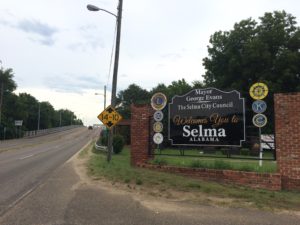 I also took some photos and tried to imagine what it was like back in 1965. If you visit these two towns, you would shake your head immediately. There’s hardly anything going on. They are both super quiet. Quaint. It doesn’t seem like anyone living there is trying to hurt a soul. Just live their lives and provide for their families.
I also took some photos and tried to imagine what it was like back in 1965. If you visit these two towns, you would shake your head immediately. There’s hardly anything going on. They are both super quiet. Quaint. It doesn’t seem like anyone living there is trying to hurt a soul. Just live their lives and provide for their families.
I salute the men and women who were brave enough to stand up for what was right and fight for the voting rights of blacks.
Racism is ignorant. I think it’s the worst disease this country has. It’s up there with greed.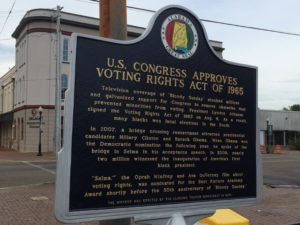 At least they keep getting close to a cure for HIV. And they’re working diligently to battle cancer. But racism? It is a part of the foundation that built this country. A poisonous foundation. It’s tough to cure that kind of ill but all we can do is keep trying.
At least they keep getting close to a cure for HIV. And they’re working diligently to battle cancer. But racism? It is a part of the foundation that built this country. A poisonous foundation. It’s tough to cure that kind of ill but all we can do is keep trying.
